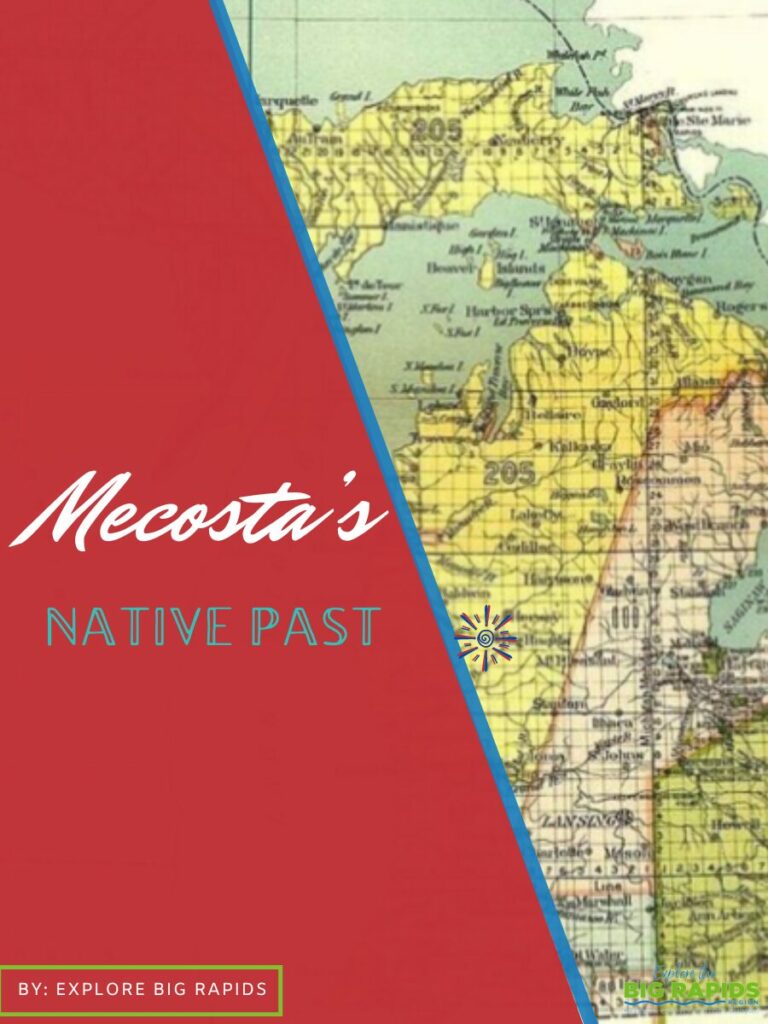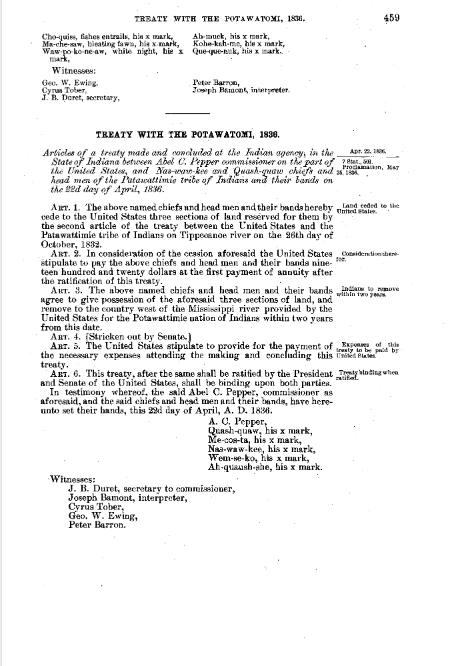Mecosta’s Native Past

A Deep-Rooted Presence
It can be hard to imagine today a time when the forests of Mecosta County were dense and unbroken, void of the bustling businesses and rural communities we all enjoy now but during the late 18th century the area had still been untouched by modern settlers and was inhabited by the Potawatomi.
The Potawatomi Indian tribe have lived in the Great Lakes region for centuries, thriving as skilled hunters, fishermen, and farmers. They have a deep connection to the land, understanding its rhythms and respecting its bounty.
They were one of the three major Algonquian-speaking tribes that originally inhabited the region, along with the Ojibwe and Odawa.
Chief Mecosta’s Big Rapids Roots
A young chief named Mecosta ruled over the Potawatomi tribe during the early 1800’s. The name Mecosta in the Potawatomi language is Mkozdé, which means “having a bear’s foot”. However, the name was recorded in English as “Big Bear”. Mecosta was born in the area now known as Big Rapids, Michigan.
Mecosta’s Encounter with White Settlers
As white settlers began to arrive in Michigan during the 19th century, Chief Mecosta found himself navigating the complex relationship between his tribe and the newcomers. He was known to be a fair and just leader, seeking peaceful coexistence with the settlers. However, the encroachment of white settlers onto tribal lands inevitably led to conflicts and misunderstandings. Despite the challenges posed by the European presence, Mecosta sought to maintain peaceful coexistence between his people and the newcomers.

The Treaty of Logansport
However, the arrival of European settlers disrupted their way of life in a fundamental fashion. In 1836, Chief Mecosta on behalf of the Potawatomi, along with other tribes, were forced to sign the Treaty of Logansport, which ceded much of their land to the United States government.
While the treaty was controversial and resulted in the forced relocation of many Native Americans, Chief Mecosta’s role in the negotiations remains unclear. Some historians suggest that he may have reluctantly agreed to the treaty to protect his people from further conflict. The result however was more devastating than Mecosta or any of the Native American tribes’ people could imagine.
The Treaty of Logansport would lead to the infamous Trail of Tears, a devastating journey that forced thousands of Native Americans to relocate west of the Mississippi River.
Resilience and Survival
Despite the hardships they faced, the Potawatomi people were resilient. Some remained in the area, finding ways to adapt to the changing landscape after hiding from the English Settlers. They continued to practice their traditional customs, passing down their stories and traditions from one generation to the next.
Today, the Pokagon Band of Potawatomi Indians is a thriving community based in southwestern Michigan. They have worked hard to preserve their cultural heritage and traditions, while also embracing modern opportunities.
Legacy and Impact
Chief Mecosta’s legacy lives on through the naming of Mecosta County. His story serves as a reminder of the rich Native American history of the region and the sacrifices made by Indigenous peoples during the era of European colonization. While Chief Mecosta may not be as well-known as other historical figures, his and other Indigenous peoples’ contributions to our region are evident in the names of our cities and towns. Their legacy can still be felt in the beautiful countryside today.
Citations
Learn More:

